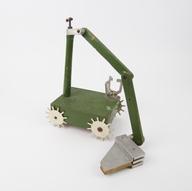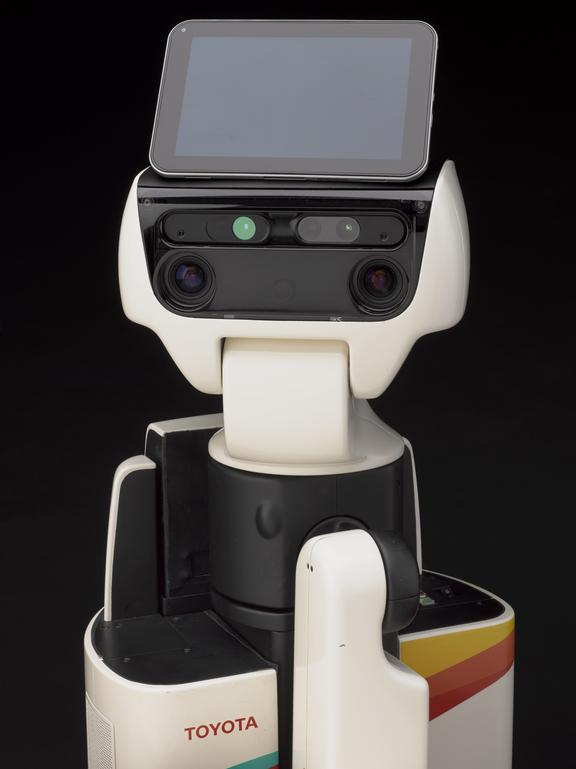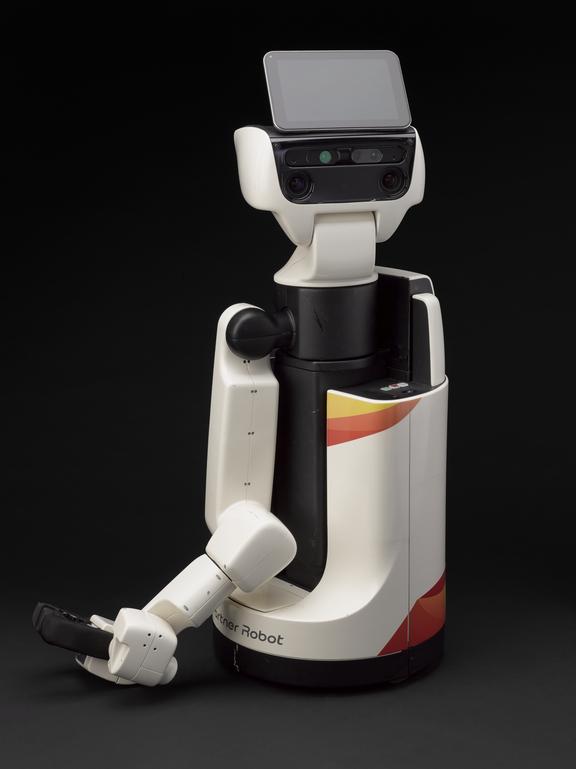









Human Support Robot, with bespoke padded neck brace packaging, by Toyota Motor Corporation, Japan, 2012
This robot is an early example of a new generation of robot ‘nurses’ designed to support people at home. Launched in 2012 by Toyuota's Partner Robot division, 10 had been built by 2016.
The Human Support Robot is designed for multiple applications, including running simple errands and connecting its users with their carers. In 2015 a newer model was released to Japanese research groups for trials with patients.
The Human Support Robot can be operated directly by home users or by others via remote control. A doctor in a clinic, for example, could use it to monitor several housebound patients. The robot can obey simple voice commands to fetch objects, reach high-up objects with its extendible body and flexible arm, and pick up different objects, including pieces of paper, with its adaptive soft finger pads and pressurised suction pad.
Details
- Category:
- Human Robotics
- Object Number:
- 2016-350
- Materials:
- aluminium (metal), electrical wiring, electronic components, plastic (unidentified), rubber (unidentified) and steel (metal)
- Measurements:
-
overall (Robot standing vertically): 1350 mm x 430 mm x 430 mm, 37 kg
- type:
- robot




